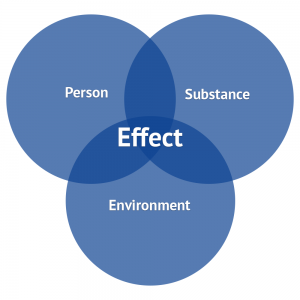There are three factors at play
Who is the person?
- What is the person’s age and gender?
- What is the person’s height and weight?
- Is he or she accustomed to using drugs?
- Is the person in good physical health?
- What is his or her state of mind?
Let us take an example: Three drinks of the same type of alcohol could have a very different effect on an athletic 30-year-old than on an inactive 55-year-old. And they definitely could have a different effect on a 17-year-old in a state of depression.
What is the drug in question?
- How much of the substance was taken?
- How fast was it taken?
- How was it administered?
- How pure was the drug?
- Was it combined with any other substances?
Let us take an example: Equal quantities of cannabis can have different effects depending on whether it is eaten or smoked. The effects can also be very different if the cannabis is combined with alcohol or another substance.
In what setting was the drug consumed?
- Where is the person doing the drug?
- Is he or she alone or with someone?
- What is the person’s relationship with the people he or she is with?
- At what time of day is the person doing the drug?
- Does he or she feel safe?
Let us take an example: The same hallucinogenic substance can produce different effects in a regular user who is among trusted friends than in a person using drugs alone, possibly for the first time.

